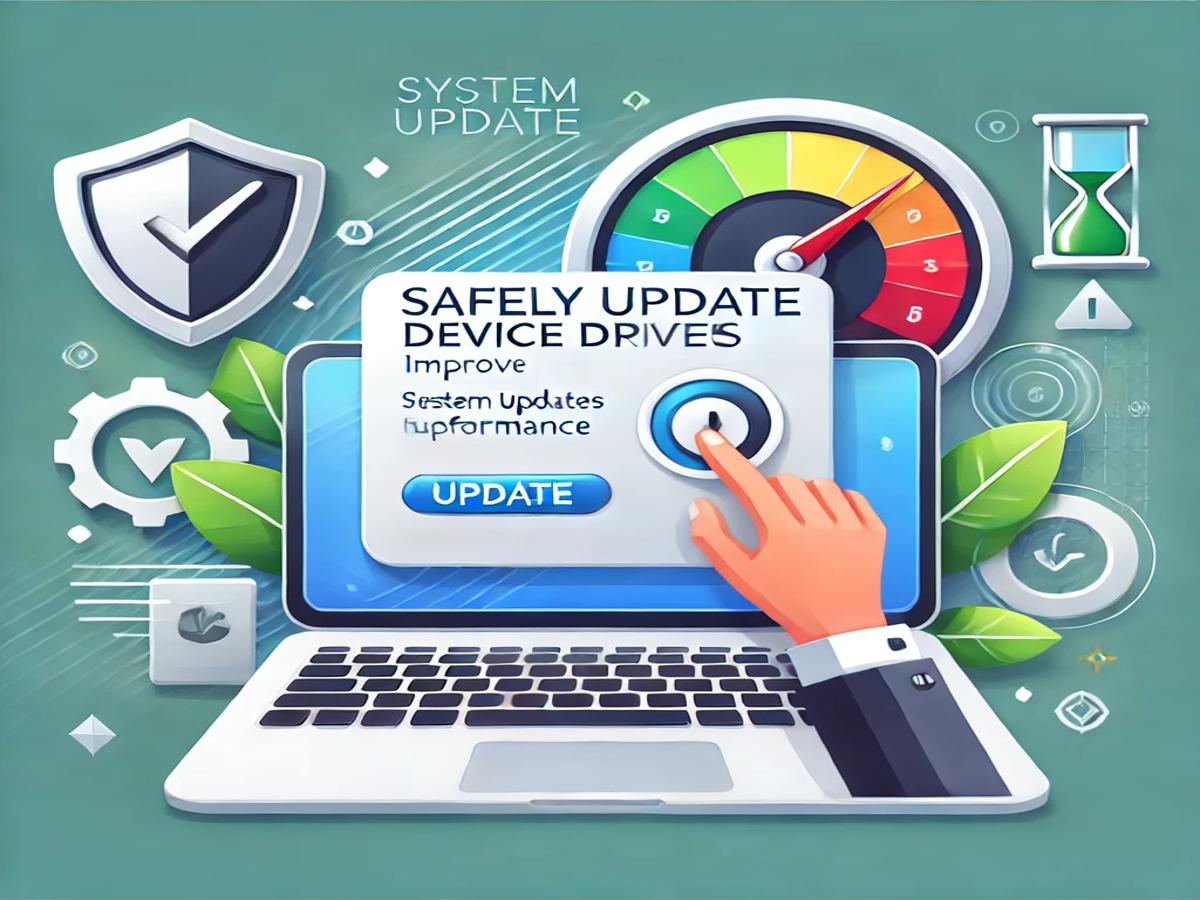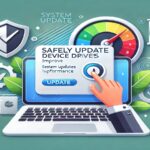Keeping your device drivers updated is critical for ensuring optimal performance, stability, and security. Device drivers act as a bridge between your hardware and operating system, making seamless communication possible. Neglecting updates can lead to system glitches, reduced performance, and even security vulnerabilities. This guide will show you how to safely update device drivers without compromising your system.
What Are Device Drivers?
Device drivers are specialized software that enables your computer’s operating system to interact with hardware components such as printers, graphics cards, and network adapters. Without proper drivers, your hardware may not function correctly, or at all.
Why Update Device Drivers?
Updating your device drivers ensures:
- Improved performance: Drivers optimize hardware functionality.
- Enhanced stability: Updates fix bugs and glitches.
- Greater compatibility: New drivers support updated software or operating systems.
- Boosted security: Updates patch vulnerabilities that can be exploited by hackers.
Signs Your Device Drivers Need Updating
- Frequent system crashes or freezes
- Slow hardware performance
- Malfunctioning peripherals like printers or USB devices
- Error messages related to hardware
- Incompatibility with newer software
Methods for Safely Updating Device Drivers
1. Using Windows Update
Windows Update often provides essential driver updates. Here’s how:
- Go to Settings > Update & Security > Windows Update.
- Click on Check for Updates.
- Install any available driver updates under the “Optional Updates” section.
Tip: While Windows Update is reliable, it may not always include the latest drivers for all devices.
2. Manufacturer’s Website
Visit the official website of your hardware manufacturer to find and download the latest drivers. Steps:
- Identify your hardware model.
- Visit the support or downloads section of the manufacturer’s website.
- Download drivers compatible with your operating system.
- Install the drivers by following on-screen instructions.
3. Dedicated Driver Update Software
Driver update tools like Driver Booster, Driver Easy, and Snappy Driver Installer can automate the process.
- Benefits:
- Automatic scans for outdated drivers.
- One-click updates.
- Backup and restore functionality.
Note: Use trusted tools to avoid downloading malicious software.
4. Device Manager
- Open Device Manager by searching for it in the Start menu.
- Locate the device you want to update.
- Right-click and select Update Driver.
- Choose between Search automatically for drivers or Browse my computer for drivers.
Precautions to Take When Updating Device Drivers
- Backup your system: Create a restore point or backup before making any changes.
- Verify compatibility: Ensure the driver matches your hardware and operating system.
- Avoid third-party sites: Download drivers only from trusted sources like the manufacturer’s site.
- Check for signed drivers: Always prefer WHQL-certified (Windows Hardware Quality Labs) drivers.
Common Mistakes to Avoid
- Installing incompatible drivers
- Ignoring backup before updating
- Over-relying on automatic updates without verification
- Downloading drivers from untrusted sources
How to Roll Back a Driver Update
If a driver update causes issues:
- Open Device Manager.
- Locate the problematic device and right-click on it.
- Select Properties > Driver tab > Roll Back Driver.
- Follow on-screen instructions.
Best Practices for Keeping Drivers Updated
- Schedule regular checks for driver updates.
- Use trusted update tools for automated management.
- Always install critical updates promptly.
- Keep your system software and antivirus updated.
FAQs
What are the risks of not updating device drivers?
Outdated drivers can lead to system instability, security vulnerabilities, and reduced performance.
Can I rely entirely on Windows Update for driver updates?
While convenient, Windows Update may not include the latest drivers for all devices. Checking the manufacturer’s website is often more reliable.
What if a driver update fails?
Restore your system to a previous point or roll back the driver via Device Manager.
Is it necessary to update all device drivers?
No, only update drivers that are outdated or causing issues.
Are third-party driver update tools safe?
Reputable tools are generally safe, but always use trusted software and verify updates before installation.
What is a WHQL-certified driver?
WHQL-certified drivers are tested and approved by Microsoft for compatibility with Windows operating systems.
Conclusion
Updating device drivers is essential for maintaining the performance, stability, and security of your system. By following the steps outlined in this guide, you can safely update your drivers without risking your system’s health. Stay proactive, and your devices will reward you with seamless performance and longevity.
















